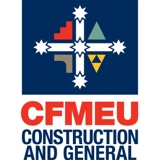Information
-
Audit Title
-
Client / Site
-
Conducted on
-
Prepared by
-
Location
-
Personnel
1. Working at Heights
-
1.1. Fall risks of 6 feet or more? (including floor holes, pits, and trenches)
-
1.2. Unsafe, missing, or incomplete edge protection?
-
1.3. Guard rails installed properly and complete.
-
1.4. Warning lines/Barricades installed properly and complete.
2. Equipment
-
2.1. Unsafe or damaged tools/equipment? (including missing or damaged guards)
-
2.2. Incorrect tools/equipment for job? (e.g. grinding discs for cutting)
-
2.3. Unsafe or incompatible attachments used with tools/equipment?
-
2.6. Operators trained in safe operation, clean-up and maintenance?
-
2.7. LOTO procedures for cleaning, servicing and maintenance of tools/equipment.
-
2.8. Tool/equipment inspect properly prior to use.
3. Scaffolds
-
3.1. Competent persons erecting scaffold.
-
3.2. Unsafe or incomplete scaffold?
-
3.3. Inspection for scaffold completed prior to use by competent person.
-
3.4. Incompatible scaffold components? Unlabelled or do not meet AS?
-
3.5. Safe Work Load (SWL) exceeded? (tools, stored materials, number of persons)
-
3.6. Scaffold tagged properly with appropriate use information.
4. Lifting Equipment
-
4.1. Unsafe or damaged crane or other lifting device.
-
4.2. Loads lifted over persons, close proximity to obstacles incl. overhead power lines?
-
4.3. Maintenance, testing and inspection completed as required prior to use.
-
4.4. Safe Working Limit (SWL) information displayed?
-
4.6. Unsafe or damaged lifting equipment, including ropes, slings, chains, hooks?
-
4.7. Lifting equipment unlabelled, does not meet AS, no SWL displayed?
-
4.8. Certified operators?
-
4.9. Lack of LOTO procedures for cleaning, servicing and maintenance of equipment.
-
4.10. SWL of crane or any lifting equipment exceeded?
-
4.11. Forklifts used properly.
5. Harness and Equipment
-
5.1. Unsafe or damaged harness or equipment?
-
5.2. Incompatible hooks/equipment?
-
5.3. Unlabelled or does not meet AS?
-
5.4. Unsafe or uncertified anchor points?
-
5.5. Lack of inspection protocol for equipment?
-
5.6. Adequate formal training for user.
-
5.7. Personal fall arrest will not allow contact with next lower level or hazardous equipment.
6. Ladders
-
6.1. Unsafe or damaged ladders?
-
6.2. Unsafe positioning of ladders?
-
6.3. Ladder not properly secured?
-
6.4. Ladder unsuitable for job? (e.g. metal ladder used for electrical work)
7. Hazardous Manual Tasks
-
7.1. Lack of identification hazardous manual tasks?
-
7.3. Inadequate risk controls? (examples: no job rotation, lighter loads, trolleys, lifting equipment, etc)
-
7.4. Lack of training in risk controls and safe lifting/ team lifting techniques?
8. Hazardous Chemical (including fuel and oil)
-
8.1. Unsafe storage location? (e.g. flammables near ignition sources, spills could enter stormwater drains, etc)
-
8.2. Incompatible chemicals stored near each other?
-
8.3. Inadequate spill containment equipment?
-
8.4. Safety Data Sheets not accessible on site?
-
8.6. Excessive quantities stored on site or in vehicles?
-
8.7. Insufficient ventilation?
-
8.8. Insufficient, or incorrect, PPE?
-
8.9. Unsuitable storage containers? (unlabeled or stored in food containers)
9. Emergency Response
-
9.1. Lack of, or no emergency plans for site?
-
9.2. Emergency procedures not displayed at site?
-
9.3. Lack of training and rehearsal of emergency plans?
-
9.4. Lack of, or inadequate first aid kits aid equipment for site?
-
9.5. Insufficient access to formally trained First Aiders for all shifts?
-
9.6. Unsuitable or inadequate communication.
10. Traffic Management
-
10.1. Lack of, or inadequate, Traffic Management Plan (TMP) in place?
-
10.2. Lack of training in TMP for all persons on site? <br>(contractors and visitors)
-
10.3. Inadequate controls for TMP? (physical barriers, bollards, speed limits, flashing lights, spotters, etc)
11. Personal Protective Equipment (PPE)
-
11.1. Lack of, or inadequate PPE (including sun protection)
-
11.2. Lack of system to issue, inspect, replace and monitor PPE?
-
11.3. Lack of training in safe use, clean-up and inspection of PPE?
12. Work Environment
-
12.1. Lack of/or inadequate amenities? (toilets, wash areas, lunch rooms, etc)
-
12.2. Insufficient lighting?
-
12.3. Inadequate housekeeping?
-
12.4. Lack of, or inadequate noise/ vibration control?
-
12.5. Site security and signage
13. Electrical Hazards
-
13.1. Unsafe electrical leads? (damaged, out of test date or untested)
-
13.2. Assured grounding requirements acceptable and followed.
-
13.3. Underground utilities located and uncovered by hand prior to excavating?
-
13.4. Minimum distances from overhead electrical lines delineated and maintained.
-
13.5. Temporary electrical panels without voids, labeled, and GFCI protected.
-
13.6. Leads and cords properly suspended.
-
13.7. Electrical equipment in wet conditions or conditions that can become wet GFCI protected.
-
13.9. Electrical equipment near chemicals that could cause damage?
-
13.11. Electrical leads grounded directly to work.
14. Environmental Hazards
-
14.1. Lack of/or inadequate Spill Management/Environmental Management plan.
-
14.2. Lack of/or inadequate, dust suppression system?
-
14.3. Lack of/or inadequate systems to prevent contaminants entering stormwater drains?
15. Administrative Procedures
-
15.1. Lack of/or inadequate Site Safety Plan?
-
15.2. Failure to obtain permits (Council, EPA, WHS, also Hot Works, Confined Space etc)
-
15.3. Suitable orientation for workers, contractors, visitors?
-
15.4. Lack or, or inadequate, supervisory arrangements?
-
15.5. Weekly safety meetings and OSHA required training conducted.
-
15.6. Lack of/or inadequate Job Hazard Analysis(JHA) for high- risk work?
-
15.7. Lack of, or inadequate system to review jHA
-
15.8. Lack of/or inadequate incident notification procedures?
-
15.9. Lack of, or inadequate, routine inspections, monitoring, audits?
Corrective Actions
-
Enter any corrective actions that will be undertaken
Sign Off
-
On site representative
-
Auditor's signature

















